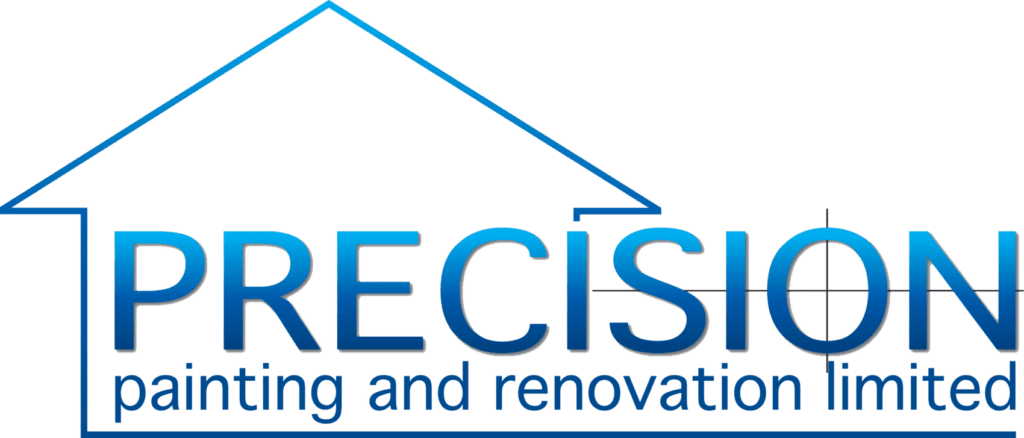Home maintenance involves much more than fixing leaks or replacing filters—it’s also about preserving the beauty and integrity of your interiors. Among all upkeep tasks, repainting often gets delayed because it’s seen as purely cosmetic. However, interior painting plays a vital role in the long-term protection of your home. With Professional Interior Painting Services, homeowners can maintain a cleaner, safer, and more visually appealing space while preventing larger repair costs in the future.
Painting is not just a finishing touch; it’s a layer of defense. The right paint acts as a shield against wear, moisture, and the slow fading that comes with everyday living. Knowing when to repaint isn’t just about style—it’s about knowing when your home needs attention.
The Overlooked Value of Paint in Home Maintenance
Every wall, ceiling, and trim piece in a home undergoes a gradual transformation over time. Paint wears down, colors fade, and surfaces collect grime. This slow decline often goes unnoticed until the difference becomes too striking to ignore. But by that point, what could have been a simple maintenance project might turn into a costly restoration.
Paint functions as more than a decorative layer. It seals porous surfaces like drywall and wood, making them easier to clean and resistant to stains or mold. It also helps protect the structure beneath from moisture damage. For instance, in humid environments, old paint can allow condensation to seep into walls, leading to rot or mildew growth.
Signs That Repainting Is No Longer Optional
Recognizing when your interior needs repainting can prevent small issues from becoming major concerns. Some signs are subtle, while others are impossible to ignore.
1. Fading or Discoloration
Sunlight, artificial lighting, and time itself cause paint to lose its vibrancy. When colors begin to look dull or uneven, it’s a signal that the paint’s protective capabilities are wearing thin. Faded paint is often less resistant to cleaning and can leave surfaces vulnerable to dust accumulation and staining.
2. Cracking, Peeling, or Bubbling
These are clear indicators that the paint film has broken down. Cracks often appear in older paint jobs or where moisture has been trapped beneath the surface. Peeling paint exposes raw materials, which can quickly deteriorate when exposed to humidity or daily contact.
3. Persistent Odors or Stains
Walls can absorb household odors, especially in kitchens, bathrooms, and laundry areas. Over time, these surfaces can develop unpleasant smells or visible marks that simple cleaning can’t remove. A fresh coat of paint not only improves aesthetics but also seals in and neutralizes lingering odors.
4. Visible Damage
Scratches, dents, and scuffs tell the story of a lived-in home. While some imperfections are minor, a collection of them can make rooms feel neglected. Repainting helps restore that sense of cleanliness and care.
5. Changes in Function or Décor
When rooms are repurposed—say, a nursery becomes an office or a dining room becomes a play area—the existing paint might not fit the new use. Beyond color preferences, certain finishes are more practical for specific spaces. For instance, satin or semi-gloss paints are easier to clean and ideal for high-traffic areas.
The Maintenance Cycle: How Often Should You Repaint?
There’s no single timeline for repainting since each home faces different conditions. However, professionals generally recommend repainting interiors every 5 to 10 years, depending on factors like surface material, environmental exposure, and usage intensity.
Here’s a typical lifespan breakdown:
-
Living rooms and bedrooms: Every 7–10 years, unless exposed to high sunlight or humidity.
-
Hallways and corridors: Every 3–5 years, as these areas face frequent scuffing and traffic.
-
Kitchens and bathrooms: Every 3–4 years, due to moisture, cooking residues, and cleaning chemicals.
-
Ceilings: Every 10 years, though yellowing from smoke or cooking may require earlier attention.
-
Trim, doors, and moldings: Every 4–6 years, since these areas are frequently touched and prone to chipping.
Maintaining this schedule doesn’t just keep your home looking fresh—it prevents more serious degradation beneath the surface.
How Does Paint Protect More Than Appearance?
While many think of paint as a style element, it’s also an important layer of protection. Quality interior paint prevents dirt, mold, and moisture from penetrating walls. It can also reflect light to make rooms appear brighter and larger, indirectly reducing energy consumption by improving natural illumination.
Key Protective Benefits Include:
-
Moisture Resistance: Paint creates a thin, sealed film that limits water absorption, protecting against swelling and rot.
-
Mold Prevention: Certain paints contain anti-microbial properties that reduce mold and mildew formation in humid spaces.
-
Ease of Cleaning: High-quality finishes allow regular cleaning without stripping the paint or leaving marks.
-
Structural Preservation: Sealed walls last longer and maintain their integrity, delaying the need for costly drywall repairs.
These advantages make regular painting more than a matter of preference—it’s a proactive approach to maintaining a healthy and efficient living environment.
Paint as an Indicator of Indoor Air Quality
Old paint can affect more than appearance—it can influence the air you breathe. Paints applied decades ago might contain harmful chemicals that degrade over time. Even modern paints lose their low-VOC (Volatile Organic Compound) stability after several years, releasing subtle but persistent odors.
Regular repainting with modern, eco-friendly formulations helps improve indoor air quality. Newer paints are designed with reduced emissions and quick curing times, creating a safer indoor environment. Homes with children, elderly residents, or individuals with allergies benefit especially from updated coatings.
Seasonal Timing for Interior Maintenance Painting
Choosing when to repaint isn’t just about surface condition—it’s also about timing. The best seasons for interior painting are typically spring and fall, when humidity and temperatures are moderate. Paint adheres and cures more evenly under these conditions, leading to a smoother, longer-lasting finish.
However, for climate-controlled interiors, painting can be done year-round. The key is ensuring proper ventilation and steady temperatures during the drying phase. Professional painters often use specialized equipment like air scrubbers and dehumidifiers to maintain optimal conditions, ensuring durability even during off-seasons.
When Repainting Becomes Preventive Maintenance
Waiting until paint visibly deteriorates can lead to higher repair costs. Repainting before issues arise offers several benefits:
-
Prevents Surface Damage: Regularly maintained paint reduces the risk of cracks and moisture seepage.
-
Preserves Structural Elements: Keeping walls sealed prevents deterioration of drywall, wood, and plaster.
-
Maintains Real Estate Value: Well-painted interiors reflect care and upkeep—factors that influence resale value.
-
Reduces Future Costs: Preventive painting minimizes the need for primer-heavy or multi-coat applications later.
-
Promotes a Healthier Environment: New coatings prevent the buildup of dust, allergens, and contaminants on aging surfaces.
A proactive painting approach transforms it from a decorative expense into an investment in your property’s longevity.
Materials and Techniques That Support Longevity
Not all paints or finishes are created equal. For maintenance painting, durability and finish type matter as much as color.
-
High-Quality Latex Paints: Offer strong adhesion, easy cleaning, and resistance to yellowing.
-
Washable Finishes: Satin, semi-gloss, and eggshell are practical choices for walls that see frequent contact.
-
Low- or Zero-VOC Options: Reduce exposure to toxins and odors while maintaining quality.
-
Primer Integration: Self-priming paints save time and improve coverage on previously painted surfaces.
Professional painters also pay close attention to surface preparation—repairing cracks, sanding rough areas, and cleaning residues before application. Proper preparation often determines how long the paint will last and how evenly it will age.
The Role of Light and Color in Maintenance Decisions
Color selection can also influence how often you need to repaint. Lighter shades tend to show dirt and wear more easily, requiring more frequent maintenance, while darker colors fade faster under sunlight. Choosing mid-tone shades with washable finishes provides a balance between aesthetic appeal and longevity.
Lighting also plays a role. Direct sunlight can cause gradual fading, particularly on walls facing windows or skylights. Regular inspection of these areas can help determine when repainting becomes necessary.
Areas That Often Get Overlooked
Certain parts of a home are frequently missed during routine painting schedules. Neglecting these spaces can affect overall home quality and appearance.
-
Baseboards and Trim: They receive constant contact from cleaning tools, furniture, and feet.
-
Ceilings: Over time, they gather dust, smoke residue, and humidity stains.
-
Closets and Utility Rooms: Often ignored, but they play a role in overall home freshness and cleanliness.
-
Behind Appliances: These areas can harbor hidden moisture and mold without visible signs.
Keeping these areas included in the maintenance plan ensures consistent quality across the home.
When Maintenance Meets Aesthetics
Repainting offers an opportunity to refresh not only the physical condition but also the mood of a home. Color psychology plays a subtle but powerful role in daily comfort. Soft neutrals create calm, bold tones energize spaces, and cool hues promote relaxation. Regular maintenance painting allows homeowners to adapt spaces to changing preferences while keeping the home structurally sound.
The Cost-Value Balance of Maintenance Painting
Many homeowners delay repainting due to perceived cost. Yet, when viewed as preventive care, interior painting proves to be one of the most cost-effective maintenance tasks available.
-
Extends Surface Life: Protects drywall and wood, avoiding expensive replacements.
-
Reduces Cleaning Costs: Easier-to-clean surfaces lower ongoing maintenance effort.
-
Adds to Property Appeal: Freshly painted interiors can raise resale value by improving perceived condition.
-
Protects Indoor Health: Sealing surfaces limits dust and allergens.
A scheduled maintenance painting cycle helps distribute expenses over time instead of facing large renovation costs later.
Professional vs. DIY: Why Technique Matters
While many homeowners consider repainting a DIY project, the difference between amateur and professional results becomes clear over time. Professional painters bring experience in surface preparation, material selection, and environmental control. Their methods ensure that the paint bonds properly, dries uniformly, and maintains its finish for years.
Professionals also use tools and techniques that minimize disruption—such as low-odor paints, efficient ventilation systems, and precision edging tools. Beyond aesthetics, their expertise reduces the risk of hidden issues like moisture entrapment or uneven curing that can shorten a paint job’s lifespan.
Creating a Maintenance Painting Schedule
For homeowners who view painting as a maintenance task rather than a style update, establishing a schedule can simplify planning. Here’s a suggested routine:
-
Annual Inspection: Examine high-traffic areas for scuffs, cracks, and fading.
-
Touch-Up Phase: Address localized issues every 1–2 years.
-
Full Repaint Cycle: Refresh each room according to its exposure and use, typically every 5–8 years.
-
Ceiling and Trim Review: Inspect every 6 years, even if the walls appear fine.
Maintaining a simple checklist ensures consistent upkeep and prevents unexpected deterioration.
The Connection Between Paint and Lifestyle
A home’s interior reflects its inhabitants. A well-maintained environment promotes comfort, focus, and pride of ownership. Regular painting supports that by keeping the surroundings bright, clean, and aligned with personal taste. Whether for a growing family or a quiet retreat, repainting sustains both the appearance and the feeling of the home.
Lifestyle factors—like having pets, young children, or frequent guests—also accelerate wear. Recognizing these influences helps in planning painting intervals that suit real living conditions, not just standard timelines.
Conclusion
Interior painting is far more than a decorative update—it’s a crucial part of preserving the value, health, and functionality of a home. When paint begins to fade, crack, or lose its sheen, it’s not merely a sign of aging décor; it’s a call for maintenance. Regular repainting keeps interiors vibrant, prevents damage, and supports a healthy indoor environment.
Approaching painting as a routine maintenance task rather than a reactionary fix ensures long-term savings and sustained comfort. Whether done by homeowners or through professional expertise, the act of repainting is ultimately an investment in the home’s future—quiet, enduring, and essential.

